
Jorge Mario Pedro Vargas Llosa, 1st Marquess of Vargas Llosa, more commonly known as Mario Vargas Llosa, is a Peruvian novelist, journalist, essayist and former politician. Vargas Llosa is one of Latin America's most significant novelists and essayists and one of the leading writers of his generation. Some critics consider him to have had a larger international impact and worldwide audience than any other writer of the Latin American Boom. In 2010, he won the Nobel Prize in Literature, "for his cartography of structures of power and his trenchant images of the individual's resistance, revolt, and defeat." He also won the 1967 Rómulo Gallegos Prize, the 1986 Prince of Asturias Award, the 1994 Miguel de Cervantes Prize, the 1995 Jerusalem Prize, the 2012 Carlos Fuentes International Prize, and the 2018 Pablo Neruda Order of Artistic and Cultural Merit. In 2021, he was elected to the Académie française.

Cangas de Onís is a municipality in the eastern part of the province and autonomous community of Asturias in the northwest of Spain. The capital of the municipality is also Cangas de Onís.

The Picos de Europa are a mountain range extending for about 20 km (12 mi), forming part of the Cantabrian Mountains in northern Spain. The range is situated in the Autonomous Communities of Asturias, Cantabria and Castile and León. The highest peak is Torre de Cerredo, at an elevation of 2650 m (8,690 ft).
Po is a parish of the municipality of Llanes, Asturias, in the coast of northern Spain. The small town of Po is situated about 2 kilometers from the capital of the municipality.
Caldueñu is one of 28 parishes in the municipality of Llanes in eastern Asturias, in northern Spain. It is just south of the Mazucu mountain and the village of El Mazuco.
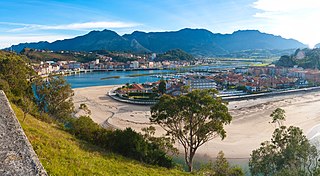
Ribadesella is a small 84-square-kilometre (32 sq mi) municipality in the Autonomous Community of the Principality of Asturias, Spain. Known for its location on the Cantabrian Sea, at the outlet of the River Sella, Ribadesella is a town that forms part of the Picos de Europa. It is bordered on the east by Llanes, on the south by Cangas de Onís and Parres, and on the west by Caravia. Ribadesella is the home town of Queen Letizia of Spain.

Tosantos is a municipality and town located in the province of Burgos, Castile and León, Spain. According to the 2004 census (INE), the municipality has a population of 60 inhabitants. Tosantos is located on the Camino de Santiago de Compostela, a 1200-year-old pilgrimage route that runs through France and Northern Spain to the Spanish city of Santiago. The hamlet has a pilgrim hostel which is open from April through October and hosts up to 50 pilgrims a night.
Meré is a village in the concejo of Llanes, in Asturias. Its population in 2004 was 175, in 84 dwellings.
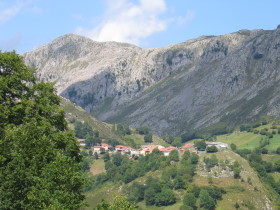
El Mazucu is a village in the parroquia of Caldueño in the municipality of Llanes, in Asturias, northern Spain. Its population in 2004 was 67, in 25 dwellings.

The Archdiocese of Oviedo is a Latin Church Archdiocese of the Catholic Church in Spain. The archdiocese encompasses roughly the current autonomous community of Asturias or Principality of Asturias. Erected in the 9th century, the diocese was elevated to an archdiocese in 1954. The diocesan see is in the city of Oviedo, where the Catedral de San Salvador is located.

Club Deportivo Llanes is a football team based in Llanes in the autonomous community of Asturias. Founded in 1949, the team plays in Primera Asturfútbol. The club's home ground is San José, which has a capacity of 2,000 spectators.

Serrapio is one of 18 parishes in Aller, a municipality within the province and autonomous community of Asturias, in northern Spain.
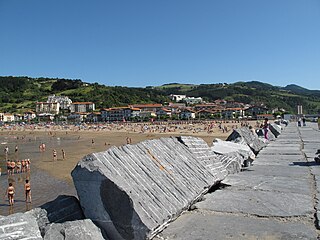
Deba is a town located in the province of Gipuzkoa, in the autonomous community of Basque Country, in the north of Spain. The town centre is right on the sea, and the municipal district includes a series of country villages, such as Itziar, Lastur and Elorriaga.
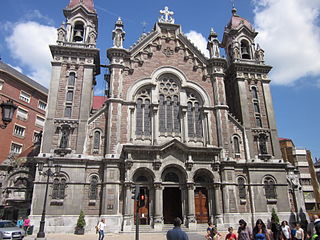
Iglesia de San Juan el Real is a church in Oviedo, Asturias, Spain. It was established in 1912. Francisco Franco was married in the church in 1923.

Iglesia de Santa María del Conceyu (Llanes) is a church in Llanes, Asturias, Spain.

Moratinos, is a town in Palencia, Spain which is located about 67 kilometers northwest of the capital of the province. It is best known to outsiders for "el castillo de Moratinos", an ages-old hill in the town center studded with family owned wine-storage caves.

Urraca Club de Fútbol is a Spanish football club based in Posada de Llanes, Llanes in the autonomous community of Asturias. Urraca plays in Tercera Federación – Group 2, holding its home games at Estadio La Corredoria, opened in January 2012 with a game Under-17 teams of Spain and Italy. Spaniards won the game by 5–1. It has a capacity for 1,700 people but only 198 seats, all of them in the main tribune.
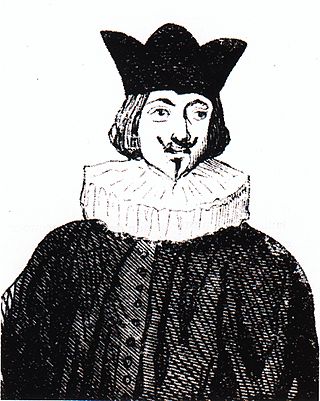
Asturian literature is the writings in the Asturian language of the northwest Iberian Peninsula. The earliest documents date back to the 10th century, but the peak period of literary output was in the 18th century, with a late 20th century revival.

Val de San Vicente is a municipality located in the autonomous community of Cantabria, Spain.



























